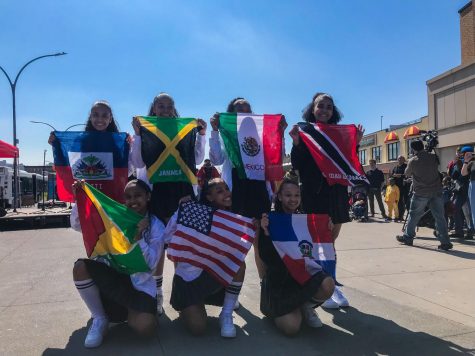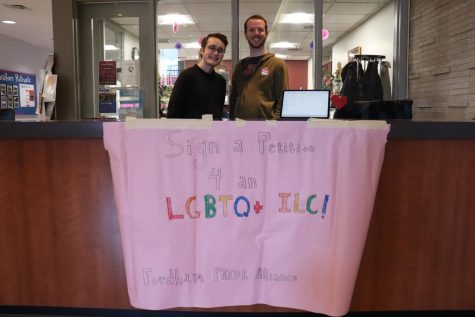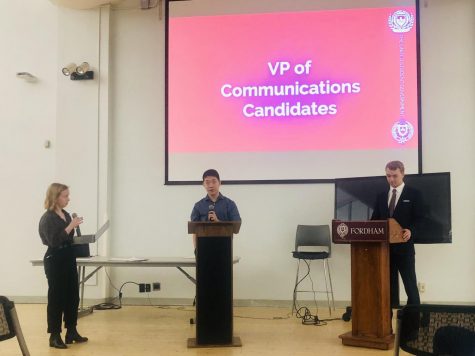Scholar and Activist Ruth Wilson Gilmore Gives Black History Month Lecture

Scholar and Activist Ruth Wilson Gilmore Gives Black History Month Lecture
Students listen to the lecture on abolition geography (Clayton Walters for The Fordham Ram)
Students listen to the lecture on abolition geography (Clayton Walters for The Fordham Ram)
Hang on for a minute...we're trying to find some more stories you might like.
Email This Story
By Clayton Walters
For its annual Black History Month lecture on Friday, Feb. 15, the department of African and African American studies hosted scholar and activist. Ruth Wilson Gilmore, Ph.D.
The title of the Black History Month lecture was “Meanwhile: Making Abolition Geography Happen.”
Gilmore is an associate director of the Center for Place, Culture and Politics in the Graduate Center of The City University of New York, co-founder of grassroots organization California Prison Moratorium Project,and author of “Golden Gulag: Prisons, Surplus, Crisis, and Opposition in Globalizing California.”
Gilmore is also a member of the Executive Committee of the Institute for Research on the African Diaspora in the Americas and the Caribbean (IRADAC) and an award-winning leading voice in the prison abolition movement.
Laurie Lambert, a professor in the African and African American studies department, said her department had been interested in booking Gilmore for over a year now to embody the department’s theme of blending scholarship and activism.
“Blending scholarship and activism means thinking about the potential impact of academic work beyond the needs of educated elites,” said Lambert. “We wanted a speaker who could offer insights into the experiences of marginalized peoples and communities who have been yearning for a fair representation of their histories and cultures.”
Lambert said Gilmore embodies this practice by working within and writing about communities that have been affected by mass incarceration.
Gilmore divided her lecture into two parts. The first section dealt with how grassroots prison abolitionist groups, such as the California Prison Moratorium Project, set out to create, build and make abolition geography happen in the state of California.
Gilmore said that these ground-up solutions were most effective in ending the rapid construction of prisons in California.
“The media, both mainstream and social, remained fixated on top-down actions like the court decision or Sacramento’s reluctant response,” said Gilmore. “So, in this talk we are going to explore this question: we’re going to ask how organizing from the ground-up, interrupted California’s prison boom?”
According to Gilmore, before a Supreme Court decision to uphold a federal ninth circuit court ruling in 2011, California frequently opened new prisons. Gilmore also said that in these prisons, people regularly died prematurely because of medical neglect.
Gilmore went on to discuss how the prison abolitionist movement has grown in California. Her grassroots organization began in the summer of 1988 and outreached through ads in weekly newspapers that invited people who wanted to stop the construction of a prison in their town to call their number.
“At the outset, California Moratorium Project wasn’t sure where to begin,” said Dr. Gilmore. “The cost for the outreach was low. As we fit a tiny organization made up entirely of volunteers who supplemented their modest resources with an annual afternoon fundraiser.”
Gilmore said the history of the prison abolitionist movement describes the difficult hindrances in prison reform where “failure turned out to be the rule, not the exception.”
In the latter half of the lecture, Gilmore shared stories from her experience in the prison abolitionist movement. She spoke about her cousin, a member of the Black Panther Party for Self-Defense, who was killed in the 1970s protest movement for curriculum reform.
“Dr. Gilmore talked about the importance of teaching black children black history, and not whitewashing curriculums,” said audience member Alison Rini, FCRH ’21. “I had never heard about the student protests in the 1970s where Los Angeles high schoolers walked out of school to demand proper history classes where Latino and African-American narratives were included.”
“I found some of the statistics that Dr. Gilmore mentioned quite shocking,” stated audience member Garrett Kohno, FCRH ’21. “For example, 70 million people today who have a record have impediments preventing them from getting a job.”
Professor Laurie Lambert hopes that Gilmore’s speech will serve as an inspiration for Fordham students interested in joining the prison abolition movement.
Lambert said it is important to encourage students to educate themselves on mass incarceration and prison abolition to understand these complex issues. She noted that mass incarceration has wide-reaching impact on the general public, whether we realize it or not.
“Students who want to study the issues more closely might consider taking Prof. Mark Chapman’s class, ‘The Black Prison Experience,” reading the work of Prof. Gilmore and other prison abolition scholars,” Lambert said. “Students might also research local organizations of prison abolitionists or reformers here in New York City.”







If you want a picture to show with your comment, go get a gravatar.